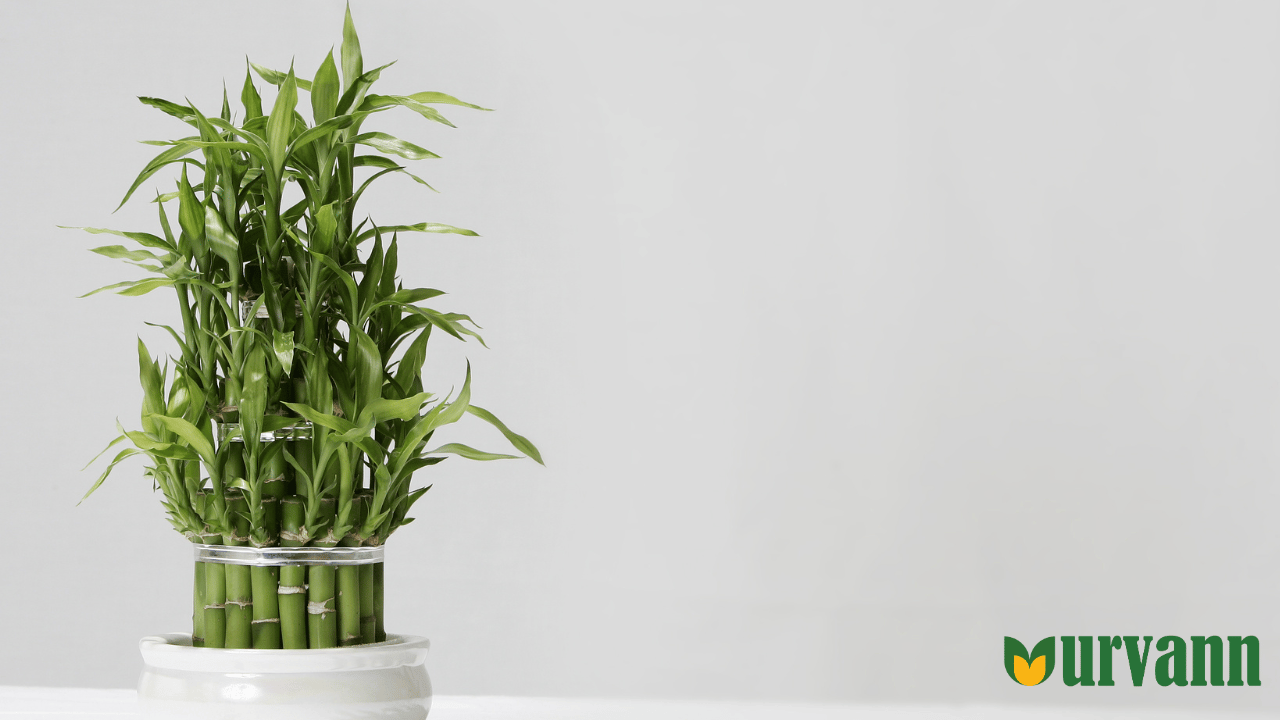Bamboo is truly one of the best plants out there; its versatility, beauty and legends surrounding it make this plant a popular choice. Whenever I think of bamboo, it often evokes images of Japanese traditions, reminding me of the days when I used to flip through magazines as a child. Just a few days ago, during a family occasion, we discussed how gifting a Lucky Bamboo plant might be the perfect decision. However, what we didn’t realise at the time is that many other types of indoor bamboo can be just as meaningful and unique for gifts or simply placed at home.
Why do People Adore Bamboo So Much?
Bamboo is a strong, elegant plant that grows quickly, creating a lush, green vibe that instantly transforms any space. They are low-maintenance greens that have adapted themselves to grow in homes as privacy screens or just a peaceful corner. Also, the fact that it symbolises strength and resilience is really inspiring.
Now, whether it’s clumping quietly or placed in a bamboo forest, standing tall and bold, bamboo always brings a sense of calm and beauty. Honestly, I can’t imagine my garden without it!
So, here’s a blog to help you explore the various types of bamboo houseplants you can add to your garden, each bringing its own sense of peace and tranquillity.
List of Types of Bamboo Plants
-
Lucky Bamboo
Botanical Name: Dracaena Sanderiana
Lucky Bamboo is hands down one of my favourite plants to gift. It’s just so easy to grow, and if you ever feel like sharing it, propagating it is a breeze. What’s cool, though, is that despite its name, Lucky Bamboo isn’t a bamboo but a part of the Dracaena family! Still, it holds its own among the popular types of bamboo plants indoor enthusiasts love.
It’s super resilient, doesn’t need much attention, and has that elegant look that instantly brightens up any space. Whether you’re just starting with plants or you’ve got a whole indoor jungle going, Lucky Bamboo fits right in. It’s no surprise it's become one of the most beloved tabletop plants out there!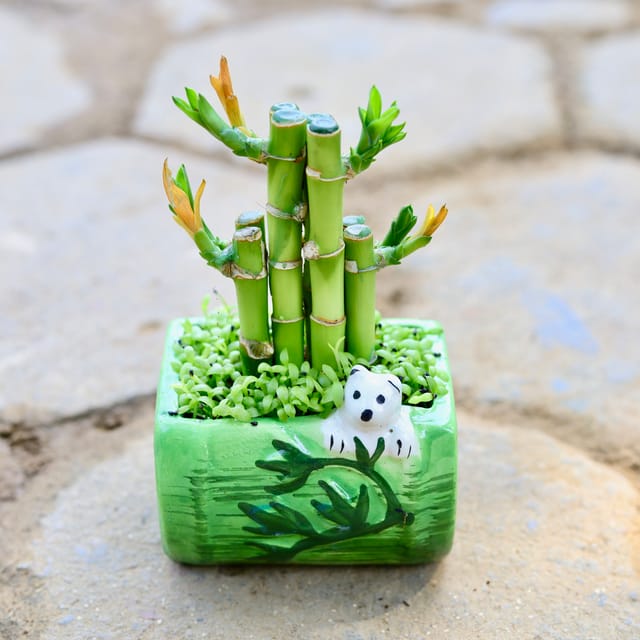
-
Buddha Bamboo
Botanical Name: Bambusa Ventricosa
Bambusa Ventricosa, also known as Buddha Bamboo or Buddha’s Belly Bamboo, is one of the most fascinating varieties out there. What makes it stand out are its swollen culms that resemble a Buddha’s belly! Native to China, this clumping bamboo isn’t just unique, it’s also packed with ornamental charm that adds a touch of whimsy to any garden or indoor space. Among the different bamboo plants you can grow, Buddha Bamboo brings something special to the table.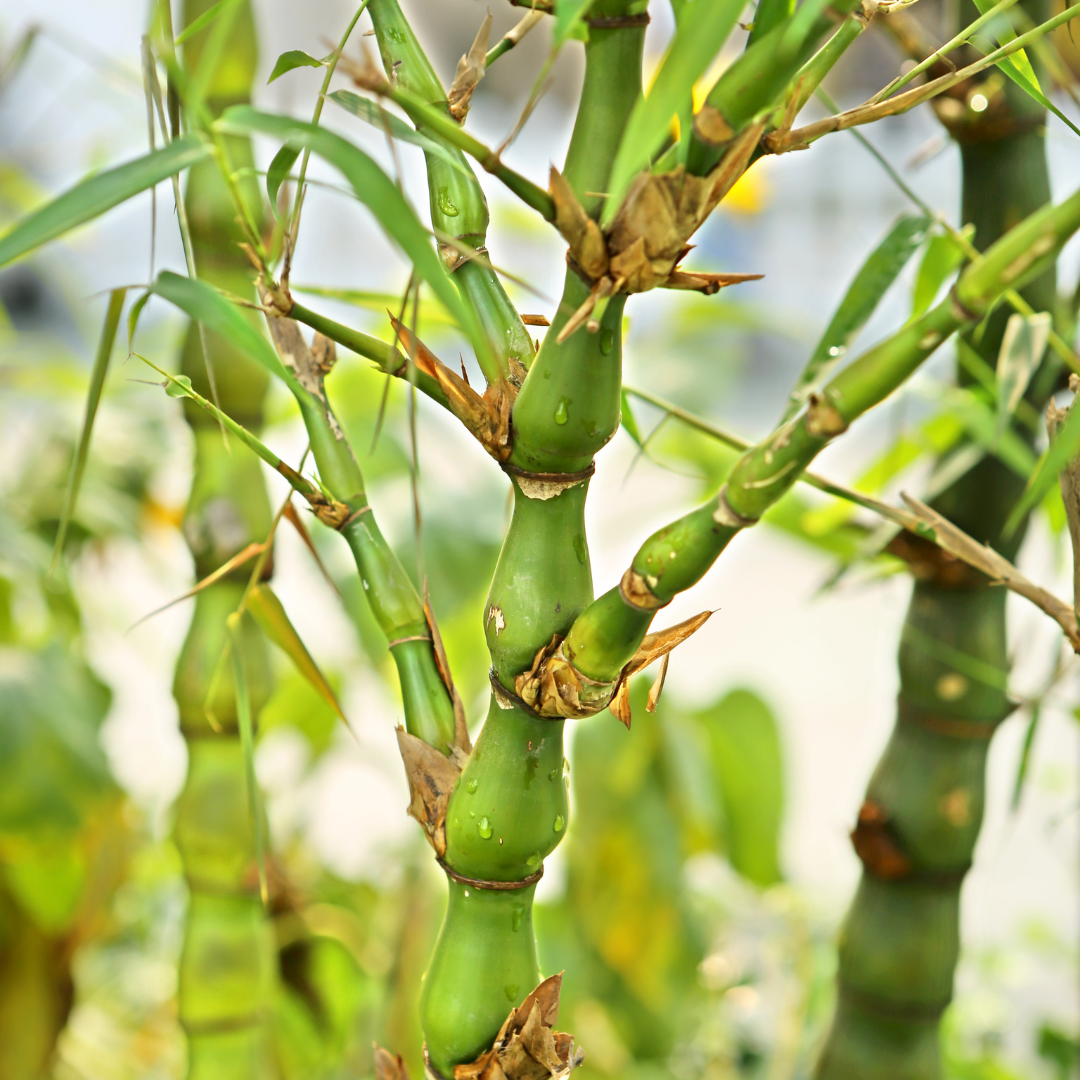
-
Bengal Bamboo
Botanical Name: Bamboo Tulda
Bengal Bamboo is a large, fast-growing bamboo species native to the Indian subcontinent, especially in regions like Bengal and Assam. Among the known bamboo plant types, it holds a high value for its strength and versatility. Bengal bamboo is widely used in construction and furniture making and is a beautiful garden feature. It’s not just strong, but a perfect addition to any landscape looking for a natural, tropical feel!
-
Dwarf Green Stripe Bamboo
Botanical Name: Pleioblastus Viridistriatus
This eye-catching bamboo grows just 3 to 6 feet tall, but its variegated yellow and green leaves hold a calming appearance. It’s perfect for ground cover, borders, or adding a pop of colour to your garden. What's even better is that, as one of the best bamboo plants for indoor, it thrives when paired with other plants such as hostas, creating a thriving ecosystem. Keep it in decorative pots, and let it bring its aesthetic magic indoors or outdoors to enhance any space!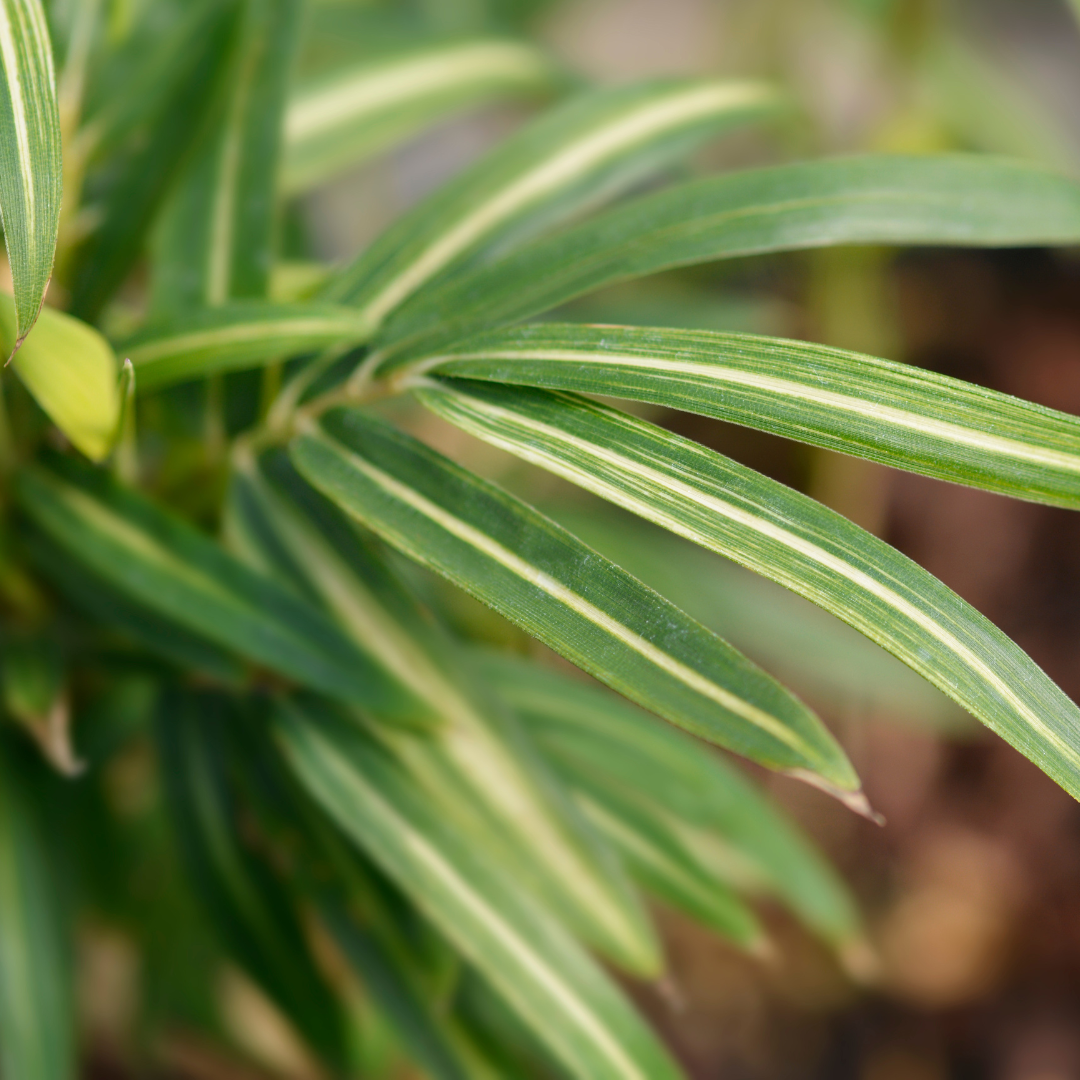
-
Chinese Fountain Bamboo
Botanical Bamboo: Fargesia nitida
This one’s for the elegance lovers. Chinese Fountain Bamboo is known for arching canes that sway gently like a fountain. It grows up to 10–15 feet and thrives in cooler climates.
Bonus: it’s non-invasive, so it won’t run wild in your garden. Perfect for a peaceful, zen-like corner or a graceful privacy screen. Think of it as bamboo with serious chill vibes.
-
Golden Bamboo
Botanical Name: Phyllostachys aurea
It is a tall, golden, and graceful bamboo that can hit heights of about 20 feet and is famous for its sunny yellow canes. You can place it in front of fields as a great privacy screen or tropical vibes. It’s strong yet elegant, just like a golden fish pole, which is the reason why it is also called Fishpole Bamboo.
-
Fern Leaf Bamboo
Botanical Name: Bambusa multiplex
Fern Leaf Bamboo is a variety of bamboo that stands out due to its elegant, feathery, and fern-like foliage. The leaves are delicate and arching, giving them a soft, airy look that adds a unique charm to any landscape or home.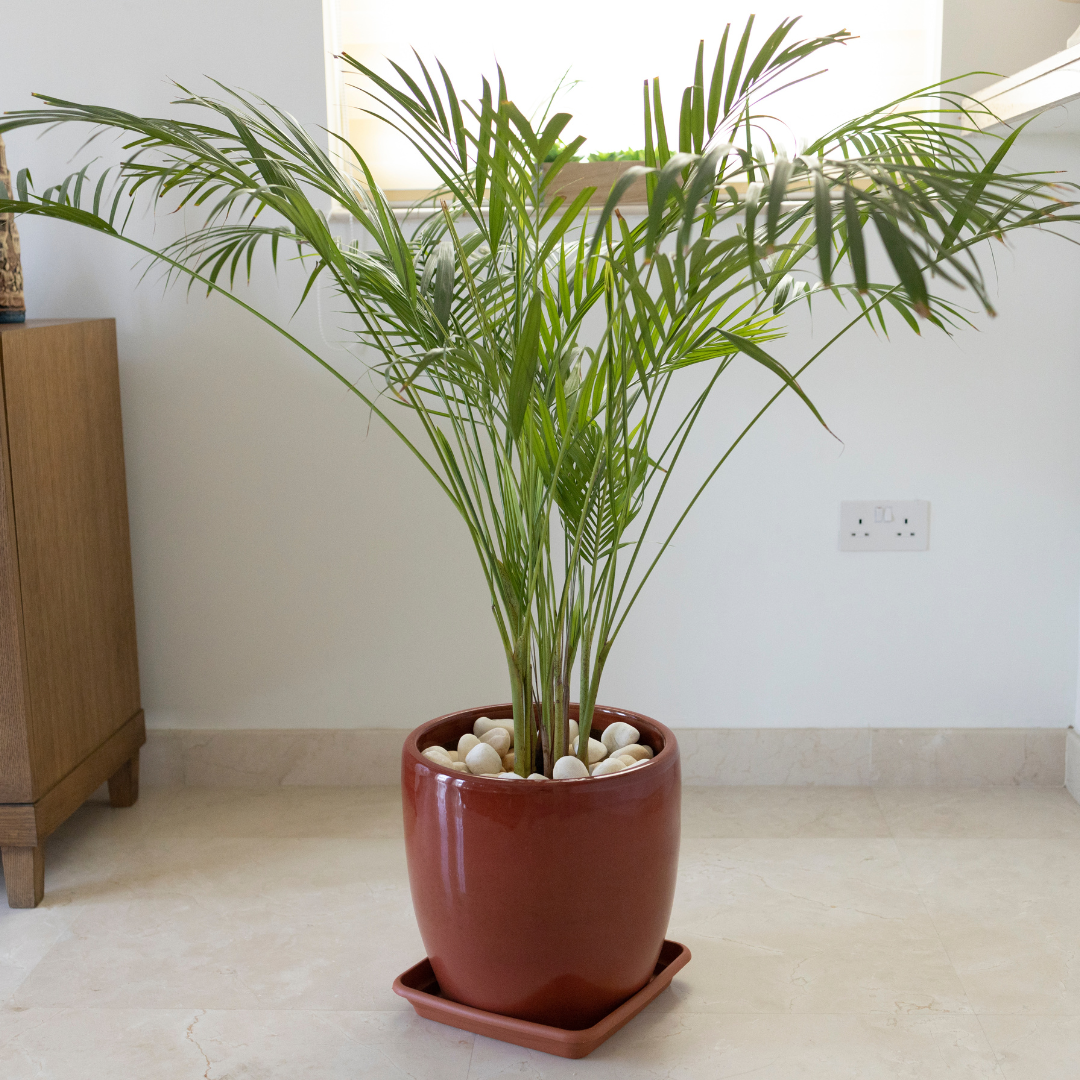
-
Arrow Bamboo
Botanical Name: Pseudosasa japonica
Arrow Bamboo is a fascinating variety with an interesting history—its canes were used by Japanese samurai to make arrows. This bamboo belongs to the grass family Poaceae and is native to Korea and Japan. The canes start out olive green, eventually turning light beige as they mature. Its vibrant green, oblong leaves make it a beautiful addition to any zen-inspired landscape. This is one of the different types of bamboo that stands out for its ability to reach impressive heights of up to 20 feet. If you prefer to limit its growth, using a root barrier in a large container can help keep it under control.
-
Black Bamboo
Botanical Name: Phyllostachys nigra
Now, this is the bamboo that is known for its tall black clumps, which make a statement. They are of high ornamental value against the rest of the vibrant greens in the garden. Black bamboo can reach an excellent height of 20 to 30 ft. and can be planted as a privacy hedge. This type of bamboo also helps hold the soil together and prevent soil erosion.
Care Requirements for Bamboo Plant
We all know that bamboo is a low-maintenance plant that can thrive in Indian gardens. Gardening with bamboo
1. Sunlight:
Most bamboo varieties love to be kept in full sun to partial shade. In hot regions, light afternoon shade can prevent leaf burn.
For example, Golden bamboo thrives in full sunlight, whereas lucky bamboo does well in bright indirect sunlight.
2. Watering:
Your bamboo plant will thrive in moist soil, but ensure it's not left soggy. One of the best ways you can prevent overwatering is by checking the topmost layer of the soil every time you water. If it appears moist, then it's best to water it after a few days.
3. Soil:
Well-draining soil is perfect for the growth of the bamboo. Soil should be rich in organic matter with a pH of about 5.5 to 6.
4. Spacing:
Plant bamboo with enough space to spread. For clumping types, 3–5 feet apart is good. Running bamboo needs more space or a root barrier to control it!
6. Pruning:
Removing dead or weak culms helps keep the plant tidy and allows better airflow.
7. Mulching:
A layer of mulch (like dry leaves or wood chips) helps retain moisture and suppress weeds.
Some Fun Trivia About Bamboo ☘️
Let’s debunk some myths about bamboo:
Myth 1: Bamboo is invasive and uncontrollable.
The bamboo world offers us two categories of bamboo: clumping and running.
Clumping varieties have short and compact rhizomes, limiting their growth and are perfect for home gardens. Running bamboo can spread fast, but it's easily managed with root barriers or containers and proper pruning.
Myth 2: Bamboo is weak and flimsy.
Nope! Although I agree that Bamboo is lightweight and bends very easily, let’s not judge it on that basis. Bamboo is an excellent plant that is even used for furniture and construction purposes. It is said that bamboo contains a parenchyma tissue which helps it to dissipate seismic energy, hence, they are commonly used in earthquake-prone areas.
Myth 3: Bamboo only grows in tropical climates.
To our surprise, Bamboo is surprisingly adaptable. Where you can easily spot epic varieties of bamboo in tropical regions, there are hardy species that thrive in colder regions, too.
Let it Grow!
And there you have it, a guide on bamboo plants for the garden that are not only easy to maintain but also total showstoppers. Whether you're gifting good fortune with a Lucky Bamboo or crafting serene corners in your home with other varieties, bamboo has got your back (just like Urvann India).
Frequently Asked Questions about Bamboo Plants to Grow in Your Garden
-
Is Bamboo Good for my garden area?
Yes, bamboo plants are amazing. Gardening with Bamboo offers numerous benefits. For example, they can be used as natural privacy screens, enhance ornamental gardens, and even act as wind fences, protecting against harsh weather conditions.
-
What kind of Bamboo is lucky for homes?
Lucky Bamboo Plant, also known as Dracaena sanderiana, is considered lucky for homes. It is not actually a bamboo, but is a lookalike. It is also gifted on several occasions as good wishes for luck and fortune, as per feng shui. One can place it on the tabletop, bookshelf or a windowsill, wherever they like.
-
How long is the lifespan of the Bamboo Plant?
Bamboo plants can live for a century or so, but individual clumps can live up to 5 to 10 years or longer, after which they can die.
-
Which is stronger - Bamboo or Wood?
Bamboo stands with a tensile strength of 28,000 pounds per square inch, which is stronger than oak wood.
-
What is the best place to keep Bamboo indoors?
As per feng shui, it is said that you should place bamboo in the southeast direction, which attracts financial wealth and prosperity in the family.


